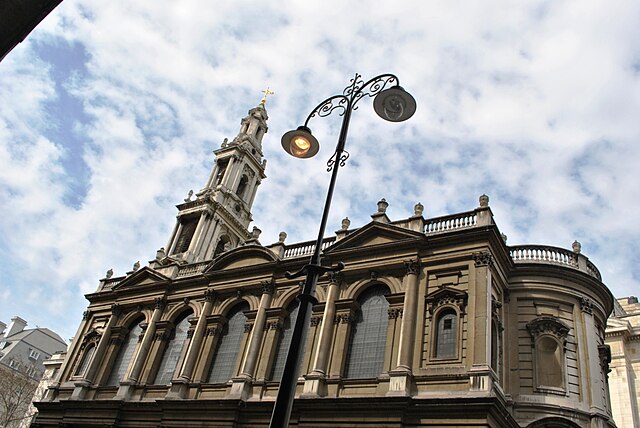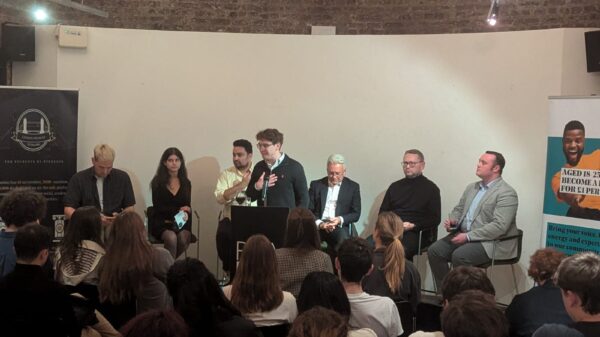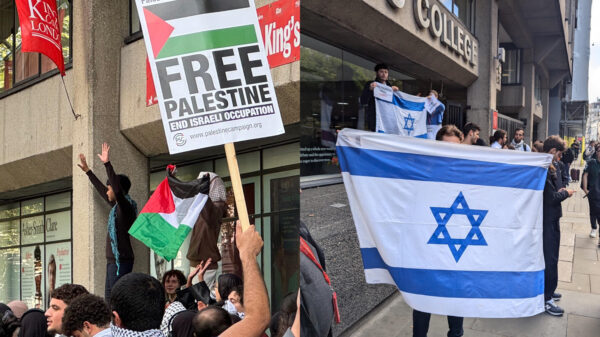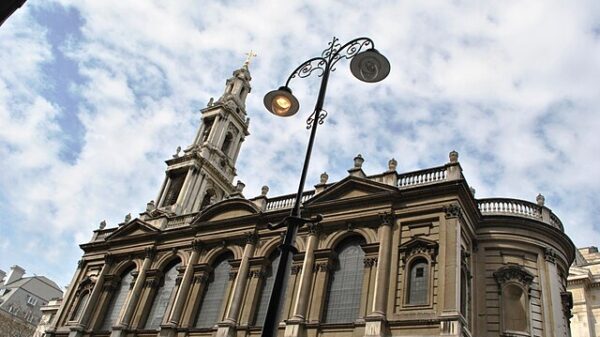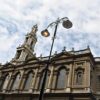Staff writer Charlotte Galea steps into St Mary le Strand to hear the story of its captivating past and present, as told by Father Peter — the church’s devoted rector.
London, 1724. The Strand is bustling and practically bursting at the seams. Some rush through the city’s streets to work, others to shop and even more are headed to their homes. Dirt stains the hems of their skirts and the rain wets their coats: London of three hundred years ago was as soggy as it is now. The rich escape the cold in carriages that rock down the cobbled streets and the poor huddle together against the rain, all towards their new church—a replacement for the church which was gutted to clear the way for a building called Somerset House.
For the next three centuries, this church will be a sanctuary to thousands in the local community. It will be the place people marry, where they are buried, where they worship. Here they will seek peace and comfort, they will be mourned in wartime and they will come together in times of need.
Though they might not recognise the name of St Mary le Strand, King’s students will certainly recognise its face. Situated just outside the Strand building, its magnificent exterior is a popular photo opportunity for many of us, particularly when its magnolia trees are blooming. This Anglican church celebrated its three-hundredth year this January, but it has a history that stretches centuries back to the Romans. Perhaps more laudable is its present: a building outside of time, quiet and peaceful in the midst of a city that never seems to stop talking.
Father Peter Babington is the priest of these halls. His father was a vicar, his mother a zoologist and, as a young man, Fr. Peter studied chemistry with hopes of being an industrial chemist. After a year at Coleman’s in Norwich, the Father was hired to breathe new life into the church. I had the pleasure of sitting down with him to learn about his role, the work that he and his colleagues have done and the impressive history of the beautiful place that we walk past every day.
St Mary’s in the Way
The history of the church begins with its name – the word ‘strand’ comes from the old English ‘strond’, meaning shore, where St Mary le Strand originally stood. With Roman, Saxon and medieval foundations, the church served the community from around 1100 until the Duke of Somerset arrived to build Somerset House. The resulting building was beautiful but displaced St Mary’s congregation. Without a church, the congregation attended services at the Chapel of the Savoy, where they and their descendants remained for around 170 years—until the Great Fire of London.
The fire fortunately didn’t reach as far as St. Mary’s— it stopped around the Maughan Library. But it did make reconstruction a necessity and, in 1711, Queen Anne brought forward an act for the construction of 50 city churches, one of which would become St Paul’s Cathedral. Of course, the Strand’s congregation aptly felt that they too were long overdue for a new church.
Meticulously designed by architect James Gibbs—famous for buildings such as the Radcliffe Camera in Oxford and the Senate House in Bloomsbury, the church was started in 1714, finished in 1721 and consecrated and blessed on 1 January 1724.
“We’re now officially 300 years old”, Babington says proudly, “One of the oldest buildings surviving in Westminster”.
During that period, the church transformed the residential area around it and all kinds of people wandered in through its doors. In 1736, Handel’s music publisher, John Walsh, was buried in the crypt. Charles Dickens’ parents, John Dickens and Elizabeth Barrow, were two of many to get married in the church on 13 June 1809. These are just two of the many stories that form the character of this divine space. Walking here, you can almost hear the walls whispering their history, especially from a ceiling as ornate as that of St Mary le Strand’s.
Father Peter notes: “We often do history through kings and queens”, but the church’s past is mainly about “the other people, the outsiders, the normal people”. It is part of why he loves working here so much, for the “learners, the tourists, the judges at the Royal Courts of Justice, or theatre producers and even fashion designers” that can walk through the doors on any given day.
A century ago, the Women’s Royal Naval Service (WRENS) adopted the church. The WRENS—who boast a second director from King’s—began during the First World War. Dame Vera Laughton, who is also a King’s College London alumni, served from 1939 to 1946 and played a huge role in World War Two. At this magnificent church, you can find the WRENS book of remembrance, featuring the names of hundreds of female naval service members who laid down their lives for our futures.
St Mary’s in the Middle
The streets were buzzing on a dreary day in March, the noise heavy and thick on the air, when I noticed this church for the first time. My hair stuck to my forehead as I arrived and irritation borne of compounded inconveniences thundered through my veins, but as the door closed behind me, I took a breath in blessed silence. My relationship with this world — one of tartan skirts and rosary beads — is shaky; still, there was something comforting about the stone walls.
Here, in this centuries-old building, the only remnant of the busy and dull day outside was the faint pattering on the stained-glass windows. The clothing of the kind volunteers and church staff was the only concession to the decade. The only thing eagerly demanding my attention was the magnificent ceiling above me.
According to Father Peter, bus drivers nicknamed the church ‘St Mary’s in the Way’, because it sat in the middle of the road and forced the traffic to split into two directions. Today, because of the pedestrianisation efforts in the area, footfall is more than ever before and Babington is pleased by this development.
“We used to be St Mary’s in the Way, and now we’re St Mary’s in the Middle!”, celebrates Fr. Peter. But the increased foot traffic is not just a result of pedestrianisation. Fr. Peter and his colleagues are making a conscious effort to modernise and understand the church’s role in the 21st century. They have hosted fashion shows, candlelit orchestral performances and, recently, an art installation. But most importantly, Babington is determined that people to feel comfortable in his church.
“We’re an inclusive Church,” he says, “We value everyone and we don’t discriminate, so it doesn’t matter who you are or where you come from, or what you believe, we’re a very open, welcoming church”.
“If a student wants to step away from the noise, they can just come in and sit down,” Babington says, “they can light a candle, they can have a talk with one of us, they can work”. I can safely say, it sure beats having to fight for a seat in the round Reading Room at the Maughan!
I would of course be remiss in talking about the church without mentioning its Jewel in the Strand flower appeal. Father Peter notes that the beautiful ceiling is “one of the treasures of the Church” and he couldn’t be more correct. Crafted by Chrysostom Wilkins, the ceiling survived the Blitz thanks to its brilliant firewatchers. Glorious and magnificent, it is a love letter to the building’s endurance and resilience through centuries. But these centuries weigh heavy on its glamour: it is in need of repair. “We were trying to think of how we could have something related to the church,” Babington said, “which would invite people to support us, so we have our ‘sponsoring a flower’ which allows people to have a range of levels of support.” Through this, communities, individuals and industries can donate to the church on their own terms.
In a city where talking to strangers feels uncouth, silent spaces are hard to come by, new buildings come and go and stepping outside seems to cost twenty pounds, it is nice to know that St Mary le Strand has stood the test of time. “I know churches can be a bit intimidating for people, but the doors are open,” Babington says. “We’re here for you as well as for everyone else.”

